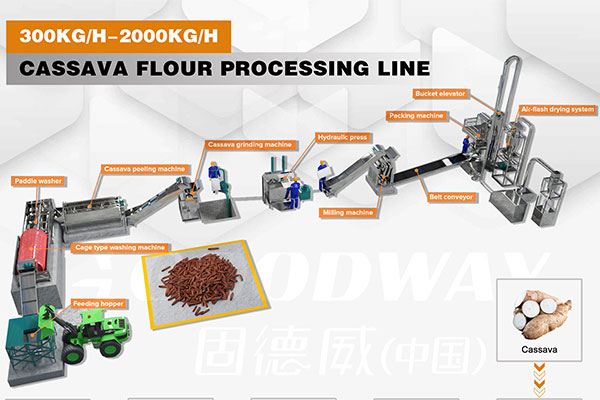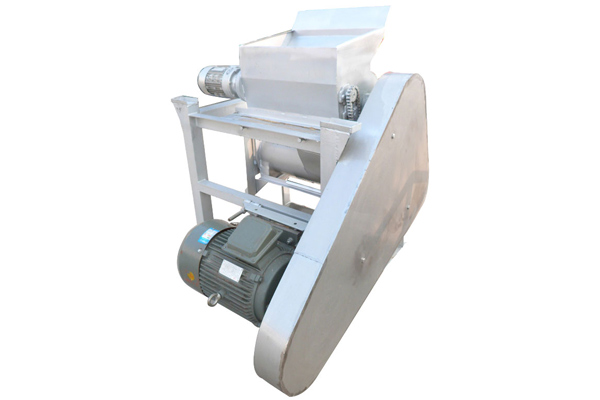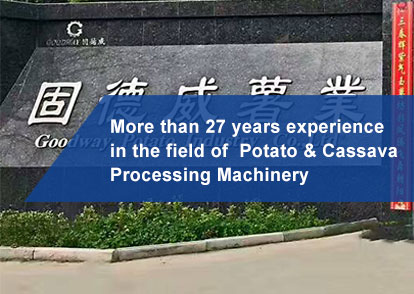Potato is the fourth major crop in the world after wheat, rice and corn. It is higher than wheat, barley and corn in terms of dry matter produced per unit area. For the protein produced per unit area, it is 2.02, 1.33 and 1.20 times of wheat, rice and corn, respectively. At present, the annual planting area of potato in China is about 4.67 million hectares. The total annual output of fresh potatoes is 55 million tons, ranking first in the world. It is understood that the price of potatoes has been maintained at a level of a few cents a kilogram. One ton of starch can be refined per 8 tons of potatoes. The import price of potato starch is as high as 5,000 yuan. The deep processing space of potatoes is huge and the prospects are very broad. However, because China's
potato starch machine is mainly imported from abroad, this has restricted the rapid development of the potato processing industry to some extent.
Consumption value of potato starch, modified starch and its derivatives
Potato starch granules are large, and amylose has a high degree of polymerization. It has the characteristics of lower gelatinization temperature, high paste viscosity, good elasticity, low protein content, no irritation, white color, no gelation and no degradation. It is versatile and has an irreplaceable role in other starches in some industries. Potato starch can be used as food processing raw materials or additives for food processing such as fans, jelly, ice cream, instant noodles, etc., and can also be used as industrial production accessories for industrial field such as printing and dyeing, sizing, paper making, casting, medicine, chemical, light industry, leather. With the development of science and technology, the original starch is used as raw material, and the physical, chemical and enzymatic preparations can change the physical and chemical properties such as solubility, viscosity, permeability, gelation and water absorption of the original starch, resulting in a series of different Properties of modified starch and starch derivatives. Modified starches and starch derivatives have many types of products and are used more widely. Not only does it increase the economic value of starch, but the properties of various new products are more suitable for industrial production.
The main modified starches are: oxidized starch, ester starch, ether starch, positive starch, graft copolymerized starch and the like.
The main starch derivatives are:
Starch fermentation products: such as alcohols, polyols, ketones, organic acids, amino acids, microbial polysaccharides, enzyme preparations, biological antibacterials, vitamins, hormones, glucose, syrup, fructose syrup, maltodextrin, dextrin, alcohol, and the like.
Market analysis of refined potato starch
1. International market analysis
At present, the international potato starch production is about 6 million tons per year, and the European Union countries account for 85%. Among them, the Dutch Awebe company has an annual output of more than 800,000 tons of potato starch, which is sold all over the world with an annual income of 800 million US dollars. With the development of modern technology, the production and application of potato starch is increasing. For example, in Germany, the potato starch production in 1958-1983 was 150,000 tons, and in 1993-1994 it reached 500,000 tons, an increase of 2.3 times, with an average annual increase of 11.6%. Asia is an important sales area for the international market for potato starch. According to relevant analysis, China currently imports more than 200,000 tons of potato starch. Japan needs to import 150,000-200,000 tons. South Korea needs to import 120,000-160,000 tons. Taiwan needs to import 80,000-100,000 tons. ASEAN countries need to import 200,000-300,000 tons. A total of 70-100 million tons is required. Before 1996, the European Community subsidized $50 for every ton of potato starch exported. Since 1998, the European Union countries have gradually eliminated the subsidy policy with the deepening of the integration process. This has led to a reduction in the area planted with potatoes and the supply on the international market will tighten.
2. Analysis of the domestic market
According to relevant information, the current domestic demand for potato starch is more than 700,000 tons. There are only 10 manufacturers in China that produce more than 5,000 tons of starch. The output of one of the best products is only 50,000 tons, accounting for 7% of the total domestic demand. Imported more than 200,000 tons through various channels, the domestic market is still more than 400,000 tons. Currently, the gap is mainly replaced by low-end products or other products.
3. Development trend analysis
From the perspective of the amount of starch consumed per capita, at present, China has only 2.5 kg. Europe and Japan are more than 10 kilograms. China's per capita level is still relatively low, and its growth potential is relatively large. The total demand will increase further. From the analysis of the market competitiveness of domestic potato starch, after China's accession to the WTO, the import tax rate of potato starch was reduced to 17%. At present, the CIF price of potato starch is 500 US dollars, while the domestic price is only 4000-4500 yuan / ton. Therefore, domestic potato starch products, as long as the quality is guaranteed, the market is right, not only has a market in China, but also is competitive.
From the perspective of the international market, China is adjacent to Japan, South Korea and Southeast Asian countries and has a geographical advantage. As long as the quality of the products is stable and reliable, it is possible to enter the markets of these countries. At present, the reduction of potato planting area and the supply of international markets are tightening. This is a good opportunity for China's potato starch industry to explore the international market.
From the perspective of industry utilization, 80% of potato starch in developed countries is used in the fields of medicine, textile, paper and petroleum. At present, 90% of potato starch in China is used in the food industry. With the development of the market economy and the advancement of internationalization, the use of potato starch by industries other than the food industry will continue to increase. China's future potato starch market will have a large room for development.
Potato starch has a large space for civilian use. According to the survey, hotels, restaurants, small ham sausage production plants, canneries, and fan factories all need good quality and high viscosity potato starch. According to the typical survey data, the annual demand of the capital city of Northeast China is more than 100 tons, and the annual average is over 1200 tons. Considering the consumption habits in the north and the south, the annual demand for civilian potato starch in more than 200 mass cities in the country will be more than 100,000 tons.
GOODWAY can provide you with a complete set of
potato starch processing machine and solutions, please contact us.

 EN
EN
 fr
fr  es
es  it
it  pt
pt 







